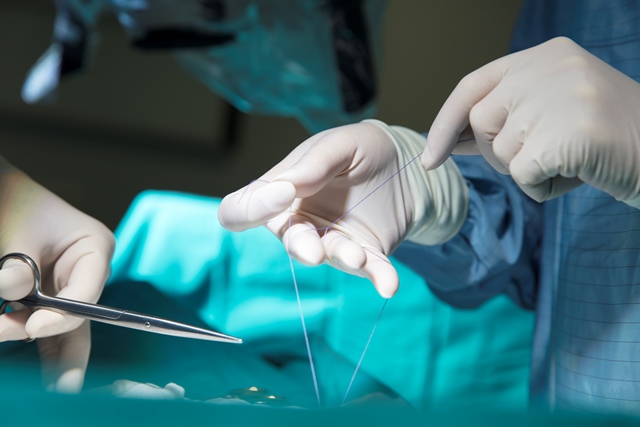What is a surgical wound?
A surgical wound is classified into two different types. They can be easily identified and relate to the size of the incision and its location:
- Surgical wound closed by simple suture (Primary Intention Healing). This is a wound of which the edges are closed in the operating theatre using sutures, staples or skin adhesive. It stands out visibly by the absence of loss of substance (skin or tissue); it heals rapidly (epidermis reconstituted in 7 days / scar consolidated after one month / permanent scar in 12 or 18 months).
- Surgical wound with directed healing (Secondary Intention Healing). This is a wound which comes with significant loss of cutaneous tissue and the edges cannot be brought together. The wound, left intentionally open, thus requires the appropriate care to help it heal. In the event of a deep wound, a drain can also be placed to facilitate the removal of certain fluids (blood or pus especially).
Causes and complications
Whether it is a result of a minor or major operation, the surgical wound still represents rupture of the cutaneous layer. Post-operatively, certain situations may however halt the normal healing process, the stages of which are the same as for an acute wound.
Factors causing delayed surgical wound healing are:
- Wound-related factors (infection, lack of oxygen supply to the tissue, haematoma etc.)
- Factors related to the patient’s general condition (smoker, malnourished, stressed, diabetic etc.)
During the healing phase, it is necessary to closely monitor the closed surgical wound and to see a doctor or nurse in the following cases:
- If the scar bleeds
- If you develop a fever
- If the scar gives off an unpleasant smell
- If the scar is painful or hard to the touch after a week
Surgical wound treatment
Treatment of surgical wounds consists of both minimising the risks of infection and rapidly achieving an aesthetically-acceptable scar. Wound care differs according to the type of wound.
- Wound closed by simple suture (Primary Intention Healing). The wound is covered with a protective dressing and cleaned with soap and water or saline solution. The sutures or staples are removed after 5 to 15 days.
- Surtureless wound (Secondary Intention Healing). After removing dead or devitalised tissue, the nursing staff use dressings which promote healing in a moist wound environment. They are changed regularly, under optimal aseptic conditions.
And afterwards?
Some essential precautions must be taken for surgical wounds, especially healing time:
- A surgical wound should be covered with a water-resistant dressing in the shower
- A person should not undertake intense physical exercise in the days after surgery
- A healthy lifestyle should be encouraged (no smoking, no drinking, and a healthy diet)
- The scar should not be exposed to the sun.


